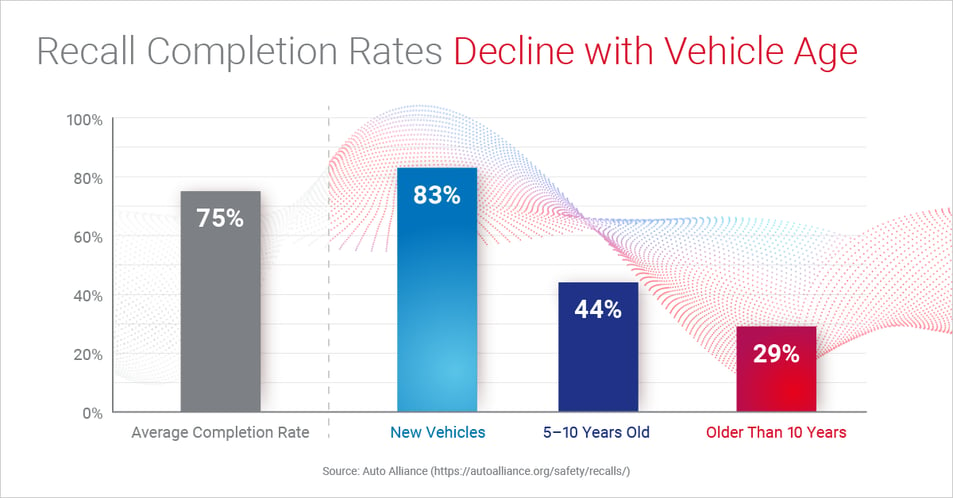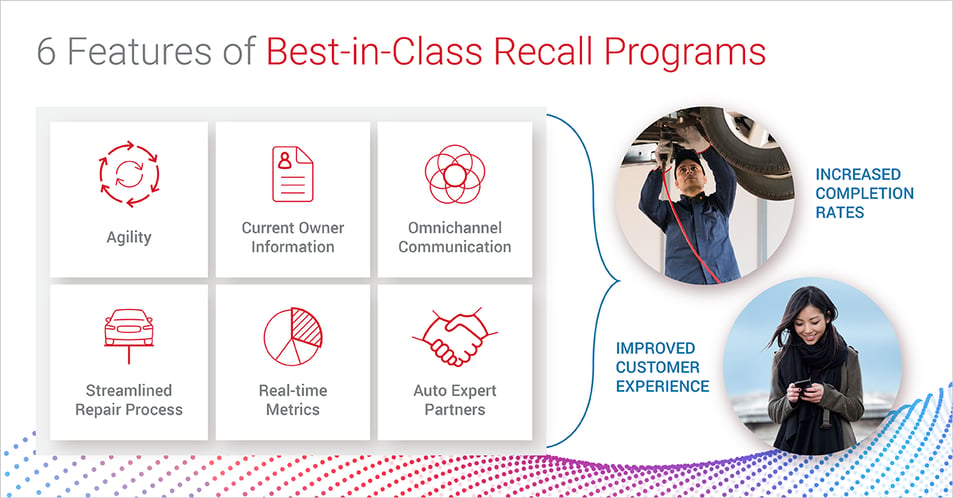In a typical year, between 20-30 million vehicles in the US are affected by recalls. The way an automaker deals with recalls can have a lasting impact on customer loyalty, brand, and public relations. Failure to comply with NHTSA recall requirements can also put automakers at risk of significant fines. Every recall campaign needs to be tailored to the specifics of the issue itself, but all should have the goal of maximizing completion rates while providing a seamless customer experience.
Challenges for Recall Managers
Automakers must overcome multiple hurdles as they execute recall campaigns. They are required to quickly notify car owners of the recall, but resources can be limited and the campaigns are typically unforeseen, restricting their ability to scale up rapidly. Hiring a dedicated team of recall support agents is costly, as volatility in recall volumes can result in periods of spikes followed by periods of low resource utilization.
According to Auto Alliance, while 83% of new vehicles complete recall repairs, this drops to only 44% of vehicles 5-10 years old, and 29% for vehicles over 10 years old. For older vehicles, finding the current vehicle owner itself is a challenge, since vehicles can change hands several times over their lifecycle.

Once current owners are identified and notified, they must be motivated to bring their car to a dealership for repair. If the correct replacement parts are not available, or if the owner must leave their car at the dealership for an extended period, the likelihood of completion diminishes.
Automakers must navigate these complexities while complying with NHTSA regulations and trying to stay ahead of any negative press. Recall managers face the critical task of developing innovative recall solutions that meet company objectives and regulatory requirements in a resourceful way.
Optimizing Recall Completion Rate with Holistic Case Management
With the right program structure in place, recall teams can achieve superior completion rates and enhance the customer experience. A holistic case management approach enables automakers to consider each recalled vehicle on a case by case basis, and execute a strategy that maximizes their likelihood of completing the recall. Here are a few best practices:

- Build in agility. Leverage a solution that enables you to ramp up quickly, but also provides flexibility to adapt and manage costs as demand fluctuates. Digital platforms tailored to manage recalls can offer configurability without coding and IT support, while third-party contact centers can scale up and down depending on the need.
- Contact the right customer. Validate VIN and customer information with multiple data sources to ensure you are contacting the current owner of the vehicle.
- Use omnichannel communication. Contact customers through a variety of channels and at the time of day when they are most likely to be available to improve your reach rate.
- Streamline the repair process. Make it as easy as possible for customers to get their cars fixed. Follow up as parts become available at dealerships, pick up the vehicle from the owner’s home, and offer loaner cars or alternative transportation to make the process as painless as possible.
- Track metrics in real time. Immediate availability of program data down to the VIN level enables you to identify problem points and make quick decisions to improve outcomes. Real-time NPS and customer satisfaction feedback also helps to detect potential issues with customer engagement.
- Partner with automotive experts. Third party recall solution providers with deep knowledge of the automotive space can provide valuable insights on how to configure your program and which channels to prioritize, so that you do not need to figure it out from scratch.
Automotive recall managers face the difficult responsibility of finding and repairing vehicles affected by recalls, while minimizing customer dissatisfaction and maintaining brand support. Digital solutions and experienced automotive partners help to facilitate a cost-effective recall program, a seamless customer experience, and better outcomes for everybody.




 Jason Peters is the Business Leader for Agero’s Consumer Affairs and Connected Vehicle line of business. Prior to joining Agero in 2017, Jason spent 6 years at CVS Health in strategic product development as well as 8 years in strategic consulting at Boston Consulting Group and The Parthenon Group. Jason is an active member of his community and can often be found coaching youth sports. Jason holds a bachelors in Government from Harvard University and an MBA from Wharton at the University of Pennsylvania.
Jason Peters is the Business Leader for Agero’s Consumer Affairs and Connected Vehicle line of business. Prior to joining Agero in 2017, Jason spent 6 years at CVS Health in strategic product development as well as 8 years in strategic consulting at Boston Consulting Group and The Parthenon Group. Jason is an active member of his community and can often be found coaching youth sports. Jason holds a bachelors in Government from Harvard University and an MBA from Wharton at the University of Pennsylvania.